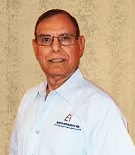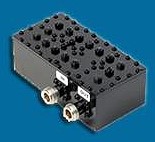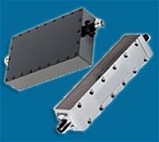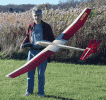
Press Release Archives:
2025 |
2024 |
2023 |
2022 |
2021
2020 |
2019
Content is copyright of company represented. Page format, custom text and
images are RF Cafe copyright - do not distribute. Note: Beginning
March 2025, posting of press releases will cost $100 each for non-advertisers.

Sam Benzacar of Anatech Electronics, an RF and microwave filter company, has published
his May 2022 newsletter that features his short op-ed entitled "This Will Be the
Year That Matter, Matters," where he describes how "Matter," which was formerly
called Project CHIP (Connected Home over IP) and then Connectivity Standards Alliance
(CSA), was announced in December 2019 with the goal of reducing fragmentation and
eliminate interoperability issues with home automation. As with Wi-Fi and Bluetooth,
Matter aims to assure compatibility between systems and devices of all manufacturers.
Also in the news is the ongoing saga of C-Band cell service and radar altimeter
interference, "Smart Agriculture" revenue projections, and rectenna RF energy harvesting.
A Word from Sam Benzacar
This Will Be the Year That Matter, Matters
 By Sam Benzacar By Sam Benzacar
The most obvious problem with home automation since it emerged is compatibility
between devices from various manufacturers and the connectivity standards they use.
While smart home devices can interoperate through Alexa, Google Assistant, and solutions
from other manufacturers, most users still require several apps to modify settings,
and even then, not every product will cooperate. That is, Alexa doesn’t speak Google
Assistant or Siri so it can’t control devices from Google or Apple devices, and
vice versa.
Finally, a solution is at hand, called Matter, and in a few years is likely to
be integrated in every home automation device. As a unifying connectivity certification,
Matter will provide a flat playing field for smart home devices from different manufacturers
in a single ecosystem. Although it was supposed to be rolled out already, it was
recently postponed but will likely appear in new Matter-certified devices later
this year.
 Formerly called Project CHIP (Connected Home
over IP) and now the Connectivity Standards Alliance (CSA), the Matter project was
announced in December 2019 with the goal of reducing fragmentation and eliminate
interoperability issues. It was spearheaded by Amazon, Apple, Google, Comcast, and
the ZigBee Alliance, and currently has several hundred industry participants. Matter
products must be certified by the CSA. Formerly called Project CHIP (Connected Home
over IP) and now the Connectivity Standards Alliance (CSA), the Matter project was
announced in December 2019 with the goal of reducing fragmentation and eliminate
interoperability issues. It was spearheaded by Amazon, Apple, Google, Comcast, and
the ZigBee Alliance, and currently has several hundred industry participants. Matter
products must be certified by the CSA.
Based on the Internet Protocol, Matter allows IP-based networking between smart
home devices and smartphone apps or cloud services. Initially, devices with Matter
support will connect via Bluetooth Low Energy (BLE) to Thread and Wi-Fi networks.
Products from Google and Amazon will all work natively with Matter's protocol while
others will follow.
The question that remains is what will happen to the hundreds of millions of
existing smart home devices don’t have Matter support. Unfortunately, there is no
universal answer to this question because not every device can be upgraded in place
to support the new standard, and some manufacturers may decide not to upgrade older
products at all. Fairly new devices from nearly every manufacturer are likely to
be upgradable, but as IPv6, latest Internet protocol, is very software intensive,
it’s likely that many devices may not be able to accommodate it.
This being said, Matter is a long-overdue standard and unquestionably welcome
in an industry that has frustrated customers for years. This is not only great news
for consumers but for every IoT deployment in industrial and dozens of other applications.
So, while it was a long time in coming, Matter will eliminate some of the most annoying
aspects of IoT that have slowed its deployment worldwide.
The Altimeter/C-band "Debate" Continues
 The FAA recently held a
meeting with about 40 representatives from the aviation industry and wireless carriers
in the hope of finding a way to solve the continuing issue of potential interference
to radio altimeters from the rollout of 5G at C-band frequencies, according to Simply
Flying. The FAA has proposed that airlines replace affected aircraft radio altimeters,
which would obviously be extremely expensive, and the major carriers have agreed
to create low-intensity buffer zones near airports and runways where the C-Band
signals possibly pose a problem, but this agreement ends on July 5. The carriers
say their networks do not pose a problem and the FCC agrees but the aviation industry
strongly takes issue with this position, and there has been little compromise by
either party in the dispute. The FAA recently held a
meeting with about 40 representatives from the aviation industry and wireless carriers
in the hope of finding a way to solve the continuing issue of potential interference
to radio altimeters from the rollout of 5G at C-band frequencies, according to Simply
Flying. The FAA has proposed that airlines replace affected aircraft radio altimeters,
which would obviously be extremely expensive, and the major carriers have agreed
to create low-intensity buffer zones near airports and runways where the C-Band
signals possibly pose a problem, but this agreement ends on July 5. The carriers
say their networks do not pose a problem and the FCC agrees but the aviation industry
strongly takes issue with this position, and there has been little compromise by
either party in the dispute.
Quantum Receiver Promises 10X Sensitivity Improvement
 BT (formerly British Telecom)
is conducting trials of quantum Atomic Radio Frequency (ARF) receivers for 5G and
IoT that boasts 100-times higher sensitivity than traditional receivers, according
to the company. Its quantum antenna technology uses ‘excited atoms’ in an effect
called electromagnetically-induced transparency to form a field detector. It could
also potentially reduce energy consumption of a network, which would be help IoT
devices become more cost efficient and longer lasting. The receiver can be placed
in hard-to-reach locations, potentially bringing mobile networks closer to achieving
national coverage. BT researchers are also eyeing the ARF’s receiver’s potential
for use in very low power passive mobile networks BT (formerly British Telecom)
is conducting trials of quantum Atomic Radio Frequency (ARF) receivers for 5G and
IoT that boasts 100-times higher sensitivity than traditional receivers, according
to the company. Its quantum antenna technology uses ‘excited atoms’ in an effect
called electromagnetically-induced transparency to form a field detector. It could
also potentially reduce energy consumption of a network, which would be help IoT
devices become more cost efficient and longer lasting. The receiver can be placed
in hard-to-reach locations, potentially bringing mobile networks closer to achieving
national coverage. BT researchers are also eyeing the ARF’s receiver’s potential
for use in very low power passive mobile networks
Report: "Smart" Agriculture to Reach $20 Billion by 2026
 A report from Global Market
Estimates projects that the global smart agriculture market will grow from its current
$13.1 billion to $20.6 billion by 2026 with an annual growth rate of 9.7%. The growth
is driven by driven by rising demand for sustainable farming techniques and innovations
that are useful to minimize the use of non-renewable energy resources and embrace
sustainable agronomic practices. The other factors supporting the growth of the
market are continuing advances in artificial intelligence and IoT and rising pressure
on the food supply system resulting from population growth. A report from Global Market
Estimates projects that the global smart agriculture market will grow from its current
$13.1 billion to $20.6 billion by 2026 with an annual growth rate of 9.7%. The growth
is driven by driven by rising demand for sustainable farming techniques and innovations
that are useful to minimize the use of non-renewable energy resources and embrace
sustainable agronomic practices. The other factors supporting the growth of the
market are continuing advances in artificial intelligence and IoT and rising pressure
on the food supply system resulting from population growth.
Researchers Create Rectenna for RF Energy Harvesting
 U.S. Army-funded research
has developed an RF switch that is more than 50 times more energy-efficient than
current technology. The Army Combat Capabilities Development Command’s Army Research
Laboratory, researchers at The University of Texas at Austin, and the University
of Lille in France, were involved in the research. Its characteristics would benefit
smartphones and other battery-powered devices because unlike typical RF switches
it draws no current when not operational. The technology can transmit an HDTV stream
at 100 GHz and is the first that can function at terahertz frequencies. The switch
is based on the nanomaterial hexagonal boron nitride within the graphene family.
The structure has a single layer of boron and nitrogen atoms in a honeycomb pattern
sandwiched between a pair of gold electrodes. U.S. Army-funded research
has developed an RF switch that is more than 50 times more energy-efficient than
current technology. The Army Combat Capabilities Development Command’s Army Research
Laboratory, researchers at The University of Texas at Austin, and the University
of Lille in France, were involved in the research. Its characteristics would benefit
smartphones and other battery-powered devices because unlike typical RF switches
it draws no current when not operational. The technology can transmit an HDTV stream
at 100 GHz and is the first that can function at terahertz frequencies. The switch
is based on the nanomaterial hexagonal boron nitride within the graphene family.
The structure has a single layer of boron and nitrogen atoms in a honeycomb pattern
sandwiched between a pair of gold electrodes.
Anatech Electronics Introduces a New Line of Suspended Stripline and
Waveguide Type RF Filters
Check out Our Filter Products



Cavity Band Pass Filters
LC Band Pass Filters Cavity Bandstop/Notch Filter
About Anatech Electronics
Anatech Electronics, Inc. (AEI) specializes in the design and manufacture of
standard and custom RF and microwave filters and other passive components and subsystems
employed in commercial, industrial, and aerospace and applications. Products are
available from an operating frequency range of 10 kHz to 30 GHz and include cavity,
ceramic, crystal, LC, and surface acoustic wave (SAW), as well as power combiners/dividers,
duplexers and diplexers, directional couplers, terminations, attenuators, circulators,
EMI filters, and lightning arrestors. The company's custom products and capabilities
are available at www.anatechelectronics.com.
Contact:
Anatech Electronics, Inc.
70 Outwater Lane
Garfield, NJ 07026
(973) 772-4242
sales@anatechelectronics.com
Posted May 27, 2022
|










 By Sam Benzacar
By Sam Benzacar Formerly called Project CHIP (Connected Home
over IP) and now the Connectivity Standards Alliance (CSA), the Matter project was
announced in December 2019 with the goal of reducing fragmentation and eliminate
interoperability issues. It was spearheaded by Amazon, Apple, Google, Comcast, and
the ZigBee Alliance, and currently has several hundred industry participants. Matter
products must be certified by the CSA.
Formerly called Project CHIP (Connected Home
over IP) and now the Connectivity Standards Alliance (CSA), the Matter project was
announced in December 2019 with the goal of reducing fragmentation and eliminate
interoperability issues. It was spearheaded by Amazon, Apple, Google, Comcast, and
the ZigBee Alliance, and currently has several hundred industry participants. Matter
products must be certified by the CSA.  The FAA recently held a
meeting with about 40 representatives from the aviation industry and wireless carriers
in the hope of finding a way to solve the continuing issue of potential interference
to radio altimeters from the rollout of 5G at C-band frequencies, according to Simply
Flying. The FAA has proposed that airlines replace affected aircraft radio altimeters,
which would obviously be extremely expensive, and the major carriers have agreed
to create low-intensity buffer zones near airports and runways where the C-Band
signals possibly pose a problem, but this agreement ends on July 5. The carriers
say their networks do not pose a problem and the FCC agrees but the aviation industry
strongly takes issue with this position, and there has been little compromise by
either party in the dispute.
The FAA recently held a
meeting with about 40 representatives from the aviation industry and wireless carriers
in the hope of finding a way to solve the continuing issue of potential interference
to radio altimeters from the rollout of 5G at C-band frequencies, according to Simply
Flying. The FAA has proposed that airlines replace affected aircraft radio altimeters,
which would obviously be extremely expensive, and the major carriers have agreed
to create low-intensity buffer zones near airports and runways where the C-Band
signals possibly pose a problem, but this agreement ends on July 5. The carriers
say their networks do not pose a problem and the FCC agrees but the aviation industry
strongly takes issue with this position, and there has been little compromise by
either party in the dispute.  BT (formerly British Telecom)
is conducting trials of quantum Atomic Radio Frequency (ARF) receivers for 5G and
IoT that boasts 100-times higher sensitivity than traditional receivers, according
to the company. Its quantum antenna technology uses ‘excited atoms’ in an effect
called electromagnetically-induced transparency to form a field detector. It could
also potentially reduce energy consumption of a network, which would be help IoT
devices become more cost efficient and longer lasting. The receiver can be placed
in hard-to-reach locations, potentially bringing mobile networks closer to achieving
national coverage. BT researchers are also eyeing the ARF’s receiver’s potential
for use in very low power passive mobile networks
BT (formerly British Telecom)
is conducting trials of quantum Atomic Radio Frequency (ARF) receivers for 5G and
IoT that boasts 100-times higher sensitivity than traditional receivers, according
to the company. Its quantum antenna technology uses ‘excited atoms’ in an effect
called electromagnetically-induced transparency to form a field detector. It could
also potentially reduce energy consumption of a network, which would be help IoT
devices become more cost efficient and longer lasting. The receiver can be placed
in hard-to-reach locations, potentially bringing mobile networks closer to achieving
national coverage. BT researchers are also eyeing the ARF’s receiver’s potential
for use in very low power passive mobile networks  A report from Global Market
Estimates projects that the global smart agriculture market will grow from its current
$13.1 billion to $20.6 billion by 2026 with an annual growth rate of 9.7%. The growth
is driven by driven by rising demand for sustainable farming techniques and innovations
that are useful to minimize the use of non-renewable energy resources and embrace
sustainable agronomic practices. The other factors supporting the growth of the
market are continuing advances in artificial intelligence and IoT and rising pressure
on the food supply system resulting from population growth.
A report from Global Market
Estimates projects that the global smart agriculture market will grow from its current
$13.1 billion to $20.6 billion by 2026 with an annual growth rate of 9.7%. The growth
is driven by driven by rising demand for sustainable farming techniques and innovations
that are useful to minimize the use of non-renewable energy resources and embrace
sustainable agronomic practices. The other factors supporting the growth of the
market are continuing advances in artificial intelligence and IoT and rising pressure
on the food supply system resulting from population growth.  U.S. Army-funded research
has developed an RF switch that is more than 50 times more energy-efficient than
current technology. The Army Combat Capabilities Development Command’s Army Research
Laboratory, researchers at The University of Texas at Austin, and the University
of Lille in France, were involved in the research. Its characteristics would benefit
smartphones and other battery-powered devices because unlike typical RF switches
it draws no current when not operational. The technology can transmit an HDTV stream
at 100 GHz and is the first that can function at terahertz frequencies. The switch
is based on the nanomaterial hexagonal boron nitride within the graphene family.
The structure has a single layer of boron and nitrogen atoms in a honeycomb pattern
sandwiched between a pair of gold electrodes.
U.S. Army-funded research
has developed an RF switch that is more than 50 times more energy-efficient than
current technology. The Army Combat Capabilities Development Command’s Army Research
Laboratory, researchers at The University of Texas at Austin, and the University
of Lille in France, were involved in the research. Its characteristics would benefit
smartphones and other battery-powered devices because unlike typical RF switches
it draws no current when not operational. The technology can transmit an HDTV stream
at 100 GHz and is the first that can function at terahertz frequencies. The switch
is based on the nanomaterial hexagonal boron nitride within the graphene family.
The structure has a single layer of boron and nitrogen atoms in a honeycomb pattern
sandwiched between a pair of gold electrodes. 




